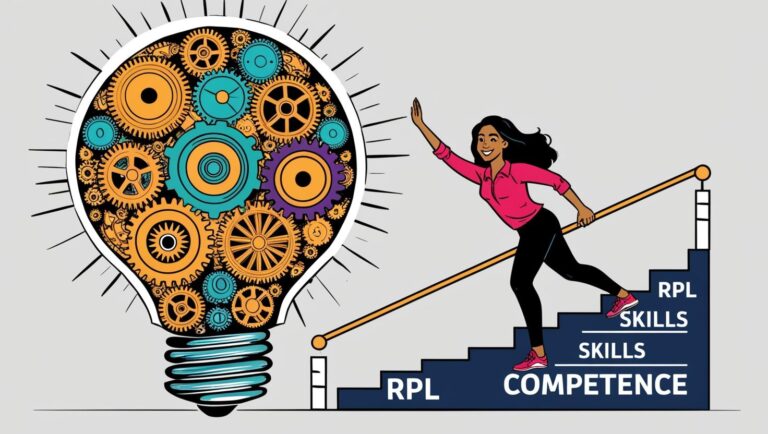Evaluation in Adult Learning: Measuring Success and Driving Improvement in the Workplace
In adult learning, knowledge and application are essential—but without evaluation, learning remains incomplete. Evaluation is the stage where learners assess outcomes, make judgments, and refine strategies. In the workplace, it transforms training into tangible results, drives performance improvement, and fosters a culture of continuous growth.
Whether it’s assessing a project, reviewing a new process, or measuring team performance, evaluation ensures that learning leads to action and improvement. It also empowers employees to become self-aware, reflective, and strategic thinkers.
In this article, we’ll explore the importance of evaluation in adult learning, practical methods for implementing it in the workplace, and strategies for turning assessment into meaningful outcomes.
What Evaluation Means in Adult Learning
Evaluation, in the context of Bloom’s Taxonomy, is the ability to judge the value of information, methods, or processes based on criteria and evidence. It sits at the top of the cognitive hierarchy, requiring learners to integrate knowledge, apply skills, and reflect critically.
In professional environments, evaluation involves:
Reviewing the effectiveness of actions or decisions.
Comparing outcomes against objectives or benchmarks.
Identifying areas of improvement or adjustment.
Making informed recommendations or changes.
For example, a team leader might evaluate the success of a new project management system by assessing task completion rates, employee feedback, and overall productivity improvements.
Why Evaluation Matters in the Workplace
Evaluation is essential for adult learners because it closes the learning loop. Knowledge acquisition and practical application are important, but evaluation ensures that lessons learned are understood, retained, and optimized.
The benefits include:
Improved Decision-Making: Evaluative thinking helps employees make informed, evidence-based decisions.
Accountability: Learners are responsible for outcomes, fostering ownership and responsibility.
Continuous Improvement: Evaluation identifies gaps and informs strategies for growth.
Performance Measurement: Organizations can track progress, determine ROI on training, and make adjustments.
Without evaluation, organizations risk investing in training that does not translate into measurable performance improvements.
Integrating Evaluation into Workplace Learning
Evaluation can be both formal and informal, structured and reflective. Effective evaluation in adult learning includes:
1. Establish Clear Criteria
Before assessing performance, employees need to understand the standards, objectives, and benchmarks. Clear criteria ensure evaluations are consistent, fair, and focused on measurable outcomes.
For instance, a customer service team evaluating a new complaint resolution process might use criteria such as response time, customer satisfaction, and adherence to company policies.
2. Use a Variety of Assessment Methods
Evaluation can take multiple forms depending on learning objectives:
Quantitative Measures: Metrics, KPIs, and numerical indicators.
Qualitative Measures: Observations, feedback, and case study analyses.
Self-Assessment: Encourages reflection and personal growth.
Peer Assessment: Builds collaborative accountability and diverse perspectives.
A blended approach ensures evaluation captures both performance outcomes and learning impact.
3. Encourage Reflective Practice
Reflection is a cornerstone of evaluation. Learners should be encouraged to consider:
What worked well and why.
What challenges arose and how they were addressed.
What could be done differently next time.
This reflective process reinforces critical thinking, self-awareness, and long-term skill retention.
4. Provide Constructive Feedback
Evaluation is most effective when accompanied by timely, actionable feedback. Feedback should highlight successes, identify areas for improvement, and provide guidance for future application.
For example, after a project review, managers can discuss achievements, note process improvements, and suggest strategies to enhance efficiency. Constructive feedback motivates employees and strengthens learning outcomes.
Practical Illustration: Evaluation in Action
Consider a marketing team implementing a new social media strategy. The evaluation process might include:
Set Objectives: Define campaign goals, such as engagement rates, lead generation, and brand awareness.
Collect Data: Track metrics, gather customer feedback, and review campaign performance.
Analyze Results: Compare outcomes against objectives, identify trends, and recognize gaps.
Reflect and Adjust: Determine what strategies were effective, what needs improvement, and plan next steps.
Provide Feedback: Share insights with the team, celebrate successes, and refine approaches.
Through this structured evaluation, employees learn from experience, improve performance, and contribute to organizational success.
Overcoming Challenges in Workplace Evaluation
Evaluation is not without challenges. Common obstacles include:
Bias and Subjectivity: Personal opinions may skew assessments. Structured criteria and multiple evaluators help mitigate this.
Fear of Criticism: Employees may be hesitant to engage honestly in self- or peer-assessment. Establishing a safe environment encourages openness.
Limited Resources: Time and tools for thorough evaluation may be constrained. Prioritizing critical tasks and integrating evaluation into workflows can help.
Resistance to Change: Evaluative findings may suggest adjustments that challenge existing practices. Leadership support is essential to foster acceptance.
Addressing these challenges ensures evaluation is effective, credible, and impactful.
Linking Evaluation to Workplace Performance
Evaluation strengthens performance by:
Enhancing Learning Retention: Employees reinforce knowledge through reflection and assessment.
Improving Processes: Insights from evaluation lead to process optimization and efficiency.
Supporting Professional Development: Individuals identify strengths, weaknesses, and development opportunities.
Driving Accountability: Employees understand their contributions are monitored and measured.
When evaluation is integrated into workplace learning, it transforms training into a strategic tool for performance improvement and growth.
Tips for Effective Evaluation
Align Evaluation with Objectives: Ensure assessments measure what truly matters.
Use Realistic Scenarios: Apply evaluation to tasks that reflect workplace challenges.
Encourage Participation: Involve employees in self- and peer-assessment for ownership.
Provide Actionable Feedback: Focus on practical steps for improvement rather than criticism.
Review and Adjust Regularly: Use evaluation findings to refine learning programs and processes.
These tips ensure that evaluation is engaging, meaningful, and results-oriented.
Long-Term Benefits of Evaluation in Adult Learning
Organizations that embed evaluation in learning programs reap multiple benefits:
Continuous Improvement Culture: Employees are encouraged to learn from experience and improve consistently.
Enhanced Decision-Making: Evaluative skills lead to more informed, strategic choices.
Increased Employee Confidence: Constructive feedback and reflection boost competence and self-efficacy.
Better Business Outcomes: Improved processes, performance, and adaptability translate into measurable results.
Sustainable Professional Development: Employees develop a mindset of lifelong learning, critical thinking, and accountability.
Evaluation completes the learning cycle, ensuring knowledge and application are tested, refined, and optimized.
Final Thoughts
Evaluation is the keystone of adult learning. Without it, knowledge remains theoretical, and application risks being inconsistent. In the workplace, evaluation ensures that learning translates into performance, growth, and tangible results.
By incorporating structured assessment, reflection, and feedback, organizations foster a culture of accountability, continuous improvement, and professional development. Employees gain confidence, develop critical thinking skills, and contribute meaningfully to organizational success.
Ultimately, evaluation transforms training programs from a series of lessons into a strategic tool that drives workplace excellence. It empowers employees to not only understand what they’ve learned but also to apply it, assess it, and continuously improve.


